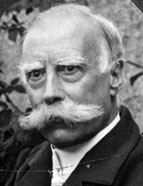

Despite his limited view of historical issues and poor archival research, Júlio de Castilho reveals an evocative capacity that far surpasses these imperfections. His discourse on Lisbon is a symbiosis of literary erudition and poetic evocation, as he ‘knew how to decipher its mossy walls, interpret its secular life and teach its glorious past’ (António Baião, Anais das Bibliotecas, Arquivo e Museus Municipais’ [Annals of Municipal Libraries, Archives and Museums] , p. 65) . In describing the neighbourhoods, he would unearth the streets, palaces, churches, names of people, relevant events, and experiences, which he picked up in his readings, exhaustively dispelling any doubts, which gives the whole work great solidity. He had the art of recreating the history of Lisbon in a ‘continuum’ of evocations, which explains why it is still today ‘ a valuable source for knowledge of the city ’ s political, social, archaeological, toponymic , and cultural history’ (Joaquim Veríssimo Serrão , ‘Júlio de Castilho – Olisipógrafo ’ [Júlio de Castilho- Olisipographer ] ). He had the art of building a comprehensive view by integrating a great diversity of individual aspects, which allows us to say that Júlio de Castilho was a historian who was both erudite and a disseminator, accessible to the average reader. This also explains why he was a source of inspiration for further studies of Lisbon. According to Luís Pastor de Macedo, ‘Castilho ’ s first disciples were three: Gomes de Brito (...) creator of toponymic studies , Eduardo Freire de Oliveira, in the notes accompanying the municipal documentation he published , and João Pinto de Carvalho’ (Fernando Castelo-Branco, ‘ Olisipografia ’ [ Olisipography ] , in Dicionário da História de Lisboa [Dictionary of the History of Lisbon] ). However, two other great names in olisipography , Augusto Vieira da Silva and Gustavo Matos de Sequeira, have admitted that they received their impetus and enthusiasm for the study of Lisbon from him. Perhaps without intending to, Júlio de Castilho was a master who paved the way for olisipography and created disciples. He was a full member of the Associação dos Arquitetos e Arqueólogos Portugueses, a corresponding member of the Academia das Ciências de Lisboa, a member of the Instituto de Coimbra, the Gabinete Português de Leitura de Pernambuco, the Instituto Vasco da Gama de Nova Goa, and the Association Littéraire et Artistique Internationale of Paris.
This work is financed by national funds through FCT - Foundation for Science and Technology, I.P, in the scope of the projects UIDB/04311/2020 and UIDP/04311/2020.
